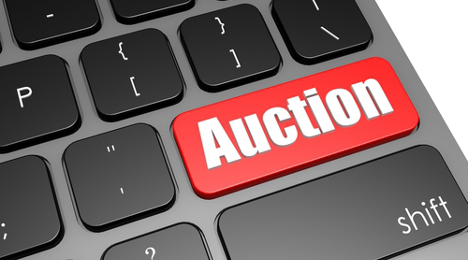KAR to Push Brick-And-Mortar & Technology Investments

By subscribing, you agree to receive communications from Auto Remarketing and our partners in accordance with our Privacy Policy. We may share your information with select partners and sponsors who may contact you about their products and services. You may unsubscribe at any time.
CARMEL, Ind. –
During his company’s latest earnings conference call, Jim Hallett said he didn’t have any acquisition news to share, but the KAR Auction Services chief executive officer did hint at what may be in the pipeline.
“So, with that I have nothing to announce today, but I would say that over the coming months you should look for some announcements in the areas of technology acquisitions and brick-and-mortar acquisitions,” Hallett said, according to a transcript of the call posted to the company’s website.
Hallett had been going through the various KAR business units in his opening remarks, eventually touching on the acquisition forefront. In explaining the company’s approach, he honed in on two areas, and in doing so, underscored the emphasis KAR puts on both the in-lane and online.
“In terms of the acquisition pipeline, there's really two areas that I would suggest you focus on, and one is, we are very focused on acquisitions that will involve technology that can be used by our sellers and by our buyers,” Hallett said.
“And then secondly, I would say we're still interested in expanding our footprint through brick-and-mortar. There's no question that dealers and sellers become more and more focused on the use of technology,” he continued. “And we not only want to be able to enhance our technology and grow our technology and acquire new technologies to support our dealers and our sellers, but we also feel there's an opportunity to expand our footprint in brick-and-mortar, as well.
“When you think about brick-and-mortar, you should not just think about the physical cars and ancillary services that we get, but you should think about creating the buyer base and expanding the buyer base in new markets which not only contributes to physical, but certainly supports our online selling as well.”
Subscribe to Auto Remarketing to stay informed and stay ahead.
By subscribing, you agree to receive communications from Auto Remarketing and our partners in accordance with our Privacy Policy. We may share your information with select partners and sponsors who may contact you about their products and services. You may unsubscribe at any time.
For more insight on both the online and the in-lane metrics at KAR, consider the fourth-quarter numbers from the ADESA business unit that Hallett shared during the call.
Volumes at the physical auction climbed 7 percent in Q4, with revenue per unit increasing to $700. Within the online business, volume was up 17 percent with revenue per unit up to $106.
“So, there’s no question that the increased supply has been a positive outcome for both our physical auctions and for our online auctions, as well,” Hallett said.
Chief financial officer Eric Loughmiller expanded on some of this when addressing a question during the Q&A portion of the call. An analyst wondered if online-only would outpace physical volumes this year or even next.
“While there’ll be growth in online-only as more cars come to market, again we have believed that they will get to physical auction, because there’s not more demand in the online-only venue than what can be met as that market reaches back to its stable levels because it’s a limited number of days that it’s in that venue,” Loughmiller said.
Hallett pointed out how these cars are typically priced at the top of the funnel.
“They normally get priced at a premium,” he said. “And sometimes when you have that much volume coming, the franchise dealer is now taking a look, do I buy this thing at the top of the funnel or do I let it work its way to the physical auction where I might be able to buy the car for considerably less?”
The KAR executives explained it like this: when there’s an abundance of cars, dealers are confident some will make it through the funnel, where they can likely pay less for them. But when supply is tight, the dealers will snatch the car up instead of waiting, because it may not be waiting for them on the other side of that funnel.
“When you have that oversupply … and I go back to my dealer days … you can be more selective,” Hallett said. “The other thing that plays into it a little bit is when the dealer is buying the car at the physical auction, he’s buying the car now fully reconditioned and not having to spend a number of days to turn that car to get it to the front line, and he basically can buy the car and put the car on his lot for sale that same day.
“So there are advantages when you have the oversupply to waiting to buy the car at the physical auction that don’t necessarily happen when you have a tight supply like we saw in ’11 and ’12,” he added.


